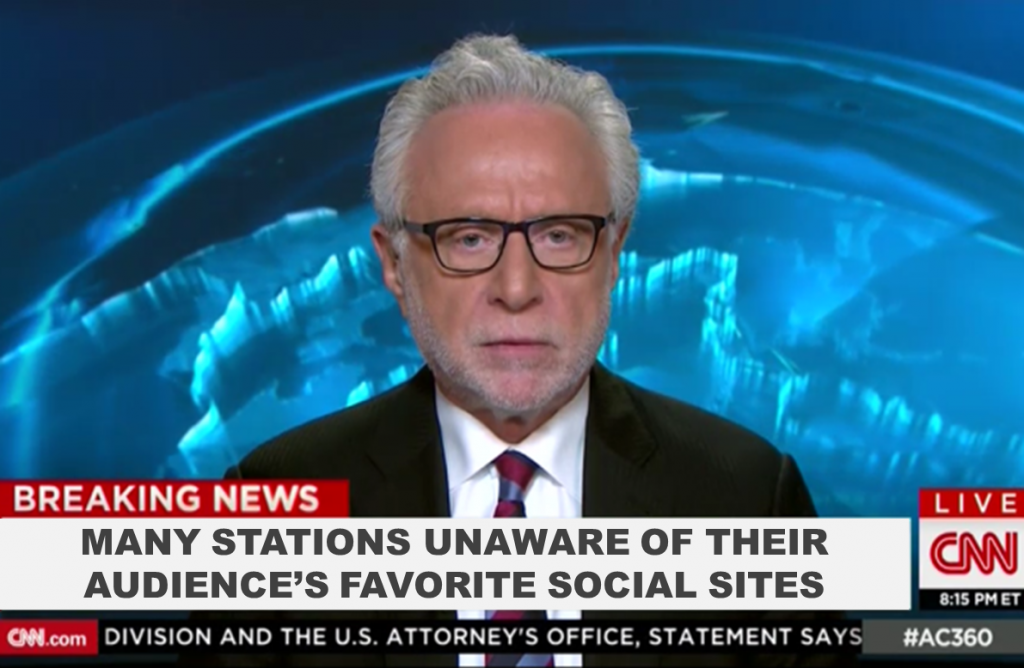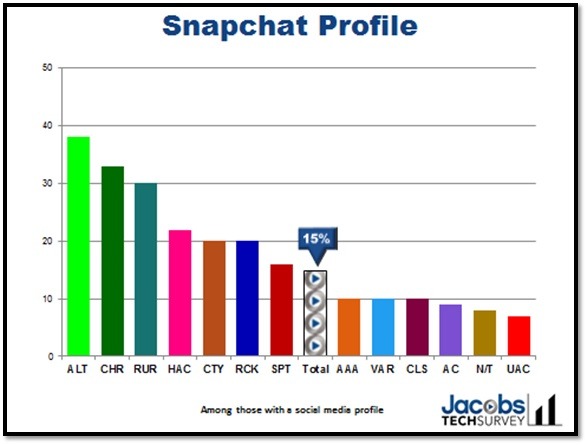Today’s the day we’re presenting a deck of big findings to attendees at the Worldwide Radio Summit in L.A. As any researcher who conducts expansive, national studies will tell you, the big dilemma often comes down to determining which results to include in a one-hour presentation – especially when there’s a lot of important news to share.
As both a researcher and a programmer/content creator, I’ve always tried to look at the data two ways. Yes, we should be fascinated by the trends, trajectories, and the stories the data tell us. That’s the researcher in me.
But we should also think long and hard about the implication of these numbers, and how to translate them into actions that benefit our brands and their many assets. Yes, that’s the P.D. in me. The goal is to better understand the audience, and hopefully increase their actual usage of our stations. After all, we’re still operating in a Nielsen world where ratings greatly matter.
And that’s why in the social media sphere, I continue to see signs of progress. But I also see a lot of time and energy being expended in the pursuit of aggregating “likes” and followers, rather than in truly connecting with consumers on their preferred platforms.
Since hiring Lori Lewis over four years ago, we’ve learned a lot about the evolving social space. Back then, it was really just about Facebook and a fledgling Twitter. Today, it’s complicated. That’s because there’s a huge array of different social outlets, and it’s left to programmers to try to determine the best platforms in which to connect with their target audiences. Given that everyone is time-crunched, having thee answer to the question, “Which social media sites are most important to my listeners?” is the first step in solving the puzzle.
In that context, everyone agrees you have to be very present on Facebook. After all, they’re the big dog. And our research bears that out. Not only are more than 90% of those with a social profile signed up on Mark Zuckerberg’s site (on the left below), but three-fourths of them use Facebook every day (on the right).
Think about that regularity for a moment. If all of our stations could convert three-fourths of our cume to daily usage, we’d be winning awards and hitting it out of the park.
Looking at this chart, you might conclude that Facebook is really the only platform that really matters. And the daily usage data reveals that most social sites struggle with everyday engagement.
But that’s the total audience – all 41,600+ of them. When you break them down by format, generations, or by individual brands as we do in our Techsurveys, you begin to see that there are subplots that are worthy of attention and thought when it comes to optimizing social media.
We discovered this several years ago with Sports Radio listeners. Fans of that format are less likely to use Facebook every day, but they are off the charts when it comes to Twitter. Hence we reached the conclusion that if you’re a personality or a programmer in the sports world, Twitter is an absolute must if your hope is to truly connect with your avid audience.
And in TS11, one of the big findings revolves around Snapchat. Many think it as bubbling under. And for the overall sample that uses social media, that’s true. Only 15% are signed up for Snapchat. So it’s easy to just focus on Facebook, Twitter, and for female formats, Pinterest – and call it good.
But a deeper look at how Snapchat performs by format suggests a different point of view:
So here’s this year’s social media insight: if you’re programming an Alternative station, it’s clear that Snapchat absolutely needs to play a significant role in your social activity. (Same with CHR and Rhythmic CHR.) When this many fans are congregating socially and sharing experiences on a platform, it’s a perfect opportunity to join them.
For years, stations have lamented about how difficult it was to find and satisfy their listeners using old school resources like zip code analysis and the pre-Internet database groups that used snail mail for station newsletters.
Today, it’s easy to find your audience – and to give them great experiences, backstage views, shareable content, and in-the-moment presence using social sites.
But it requires more than just defaulting to Facebook and counting up “likes.”
Succeeding at social media is as much of an art form as programming a great radio station.
Becoming a social brand requires great insight, perspective, crisp writing, and a true understanding of your audience’s world and what they value.
And the rewards can be great because unlike fielding a music test or setting up a musical scheduling system, you can’t buy your way to social success.
It must be earned.
And that’s the art.
- Can Radio Afford To Miss The Short Videos Boat? - April 22, 2025
- Media And Technology In 2025: Believe It Or Not! - April 18, 2025
- In Radio, You Just Never Know - April 17, 2025







Great information, as usual. Radio stations spend all their time fine tuning music, promotions, and even the colors on their website to their target audience but just throw social media content at the wall hoping it will stick. Just hoping that Facebook will reach everybody is not a strategy, and you clearly show that every station needs to look at where their audience is and reach them not only with the right platform but with the right message. It’s sort of like back in the days when we had money to advertise on TV and we spent all kinds of time making sure the commercial had the right message and the media buy was on the right shows. Same thing, but now it’s all online. Can’t wait to see all the results and wish I was in LA with you to see them in person.
Thanks for the kind word and the keen observations – and it’s good to have you back in action. Appreciate you taking the time, Mark
Good read on social.
Note, a few days ago Facebook made changes to its delivery algorithm. The inference is in lowering ability of businesses to use FB for promotion. The spoken part comes from the FB “Newsroom”: https://newsroom.fb.com/news/2015/04/news-feed-fyi-balancing-content-from-friends-and-pages/
Two of the three changes imposed are important to stations. They affect positions in a newsfeed.
“The second update tries to ensure that content posted directly by the friends you care about, such as photos, videos, status updates or links, will be higher up in News Feed…”
“…many people have told us they don’t enjoy seeing stories about their friends liking or commenting on a post.”
As FB drops organic impressions for businesses to 1%-2%, we still can’t tell if FB response is equal to effort – unless that response is tied to a landing page having a designated goal.
Ken, it may end up becoming much like radio programming. The goal is to do the right thing, present a great radio station (music, talk, entertainment, production) – and then hope that the right people see/hear your efforts. Even as organic reach for businesses declines (or is engineered to decline), the potential for sharing, increased visibility, and presence is worth the effort. When a platform is that expansive, it demands that radio acknowledge that heft – but to do it strategically in ways that aren’t interruptive or annoying to Facebook users. I’ll let Lori add to this if she likes. Thanks for chiming in, as always.
Probably its only FREE organic reach for businesses that’s being scaled back and its intent is as a revenue generator as much as to respond to their own user research.
My guess is that radio stations that use Facebook to collect likes probably won’t be served well by paying the freight. Those that create one on one personal experiences with their stars and brands probably will.
Can you really blame Facebook for not providing free promotion for radio stations and other businesses?
We knew the gravy train would end at some point. No landlord in their right mind would allow you to live in their place for free. Thanks, Bob.
Hi Fred, I look forward to your daily posts on Linked-In! Always informative and entertaining.
Facebook has been cranking down organic reach for companies for quite sometime. Here’s a piece from last September that I hope people find useful: https://www.radioworld.com/article/our-free-fb-ride-is-nearly-over/272433. To confirm, just take a look at your own station organic reach. If you want to seriously play on Facebook, it takes a serious budget.
Thanks for the kind words, Mark. Lori Lewis will have a guest post next week with her “take” on this & what it means to broadcasters. Appreciate you commenting.
Thanks for the kind words, Mark. Lori Lewis will have a guest post next week with her “take” on this & what it means to broadcasters. Appreciate you commenting.